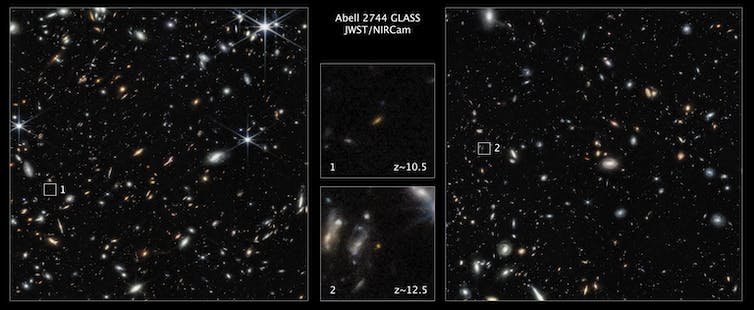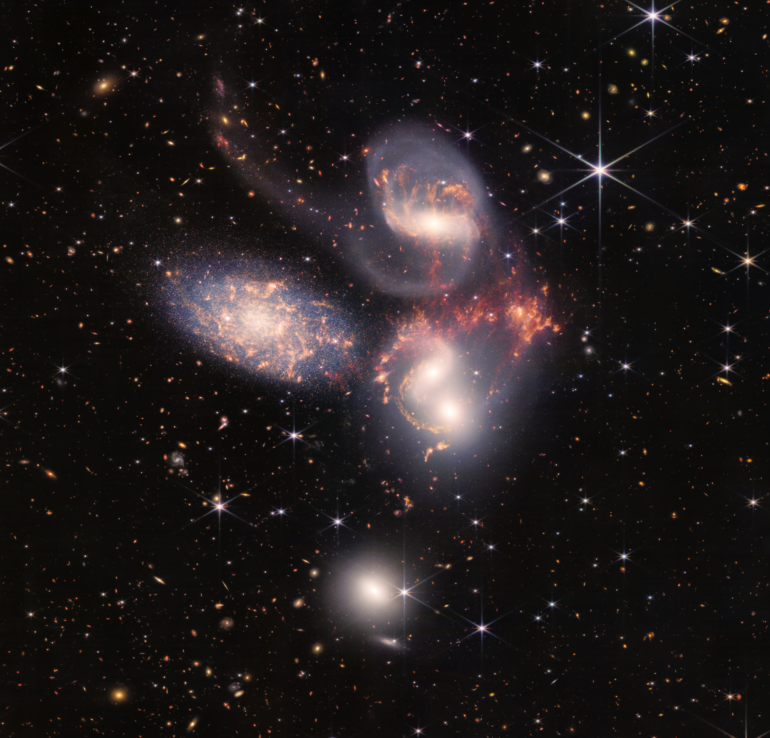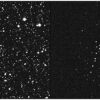If you want to know what happened in the earliest years of the universe, you are going to need a very big, very specialized telescope. Much to the joy of astronomers and space fans everywhere, the world has one – the James Webb Space Telescope.
In this episode of “The Conversation Weekly,” we talk to three experts about what astronomers have learned about the first galaxies in the universe and how just six months of data from James Webb is already changing astronomy.
The James Webb Space Telescope successfully launched into space on Dec. 25, 2021. After about six months of travel, setup and calibration, the telescope began collecting data and NASA published the first stunning images.
One of Webb’s nicknames is the “first light telescope.” This is because Webb was specifically designed to be able to see as far back as possible into the earliest days of the universe and detect some of the first visible light.
You can see these galaxies in the images NASA has released. Jonathan Trump, an astronomer at the University of Connecticut, is on one of the teams working on some of the early James Webb data. He was watching the release of the first images live and noticed some things many nonastronomers might have missed. “In the background, behind these beautiful arcs and spirals and massive elliptical galaxies are these tiny, itty-bitty red smudges. That’s what I was most interested in, because those are some of the first galaxies in the universe.”

This compound image shows some of the earliest galaxies ever seen, highlighted by the small boxes in the images on the left and right, and shown up close in the images in the center.
NASA, ESA, CSA, Tommaso Treu (UCLA), CC BY-SA
To see any of these galaxies from the earliest days of the universe would be exciting, but right off the bat, Jeyhan Kartaltepe, an astronomer at the Rochester Institute of Technology, found something exciting when she started digging into the data.
“One of the things we’ve learned is that there are more of these galaxies than we expected to see.” In addition to working on identifying these early galaxies, Kartaltepe has been using Webb’s incredible resolution to study their structure and shape. “We expect there to be discs because discs form pretty naturally in the universe whenever you have something that’s rotating. But we’ve been seeing a lot of them, which has been a bit of a surprise.”
In addition to noting the shape of the galaxies in the early universe, astronomers like Trump are starting to be able to assess the chemical composition of these galaxies. He does this by looking at the spectrum of light James Webb is collecting. “We look at these distant galaxies and we look for particular patterns of emission lines. We often call them a chemical fingerprint because it really is like a particular fingerprint of particular elements in the gas in a galaxy.”
The universe started with…



